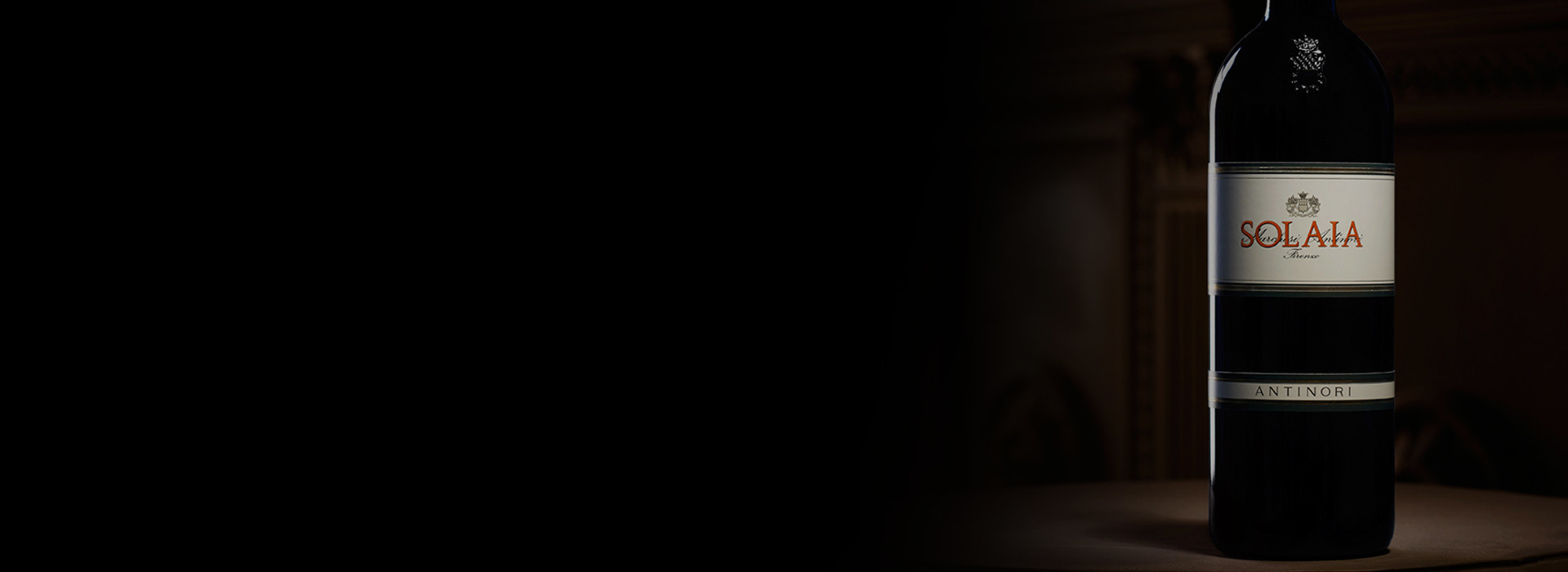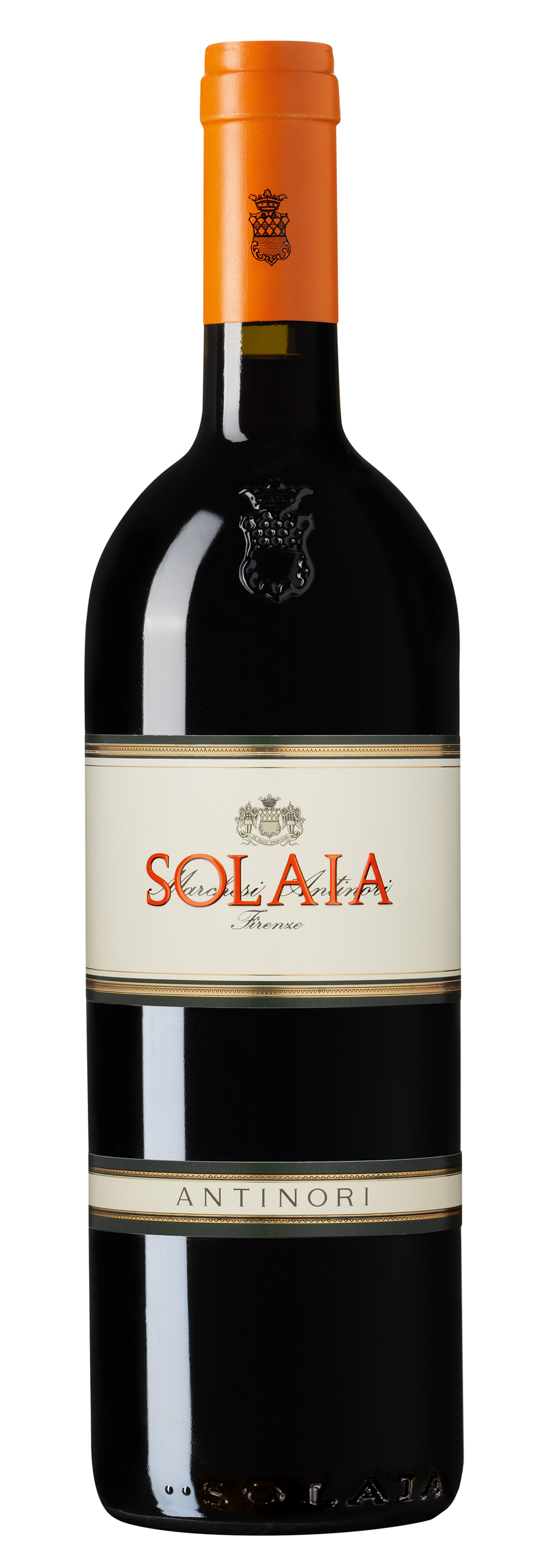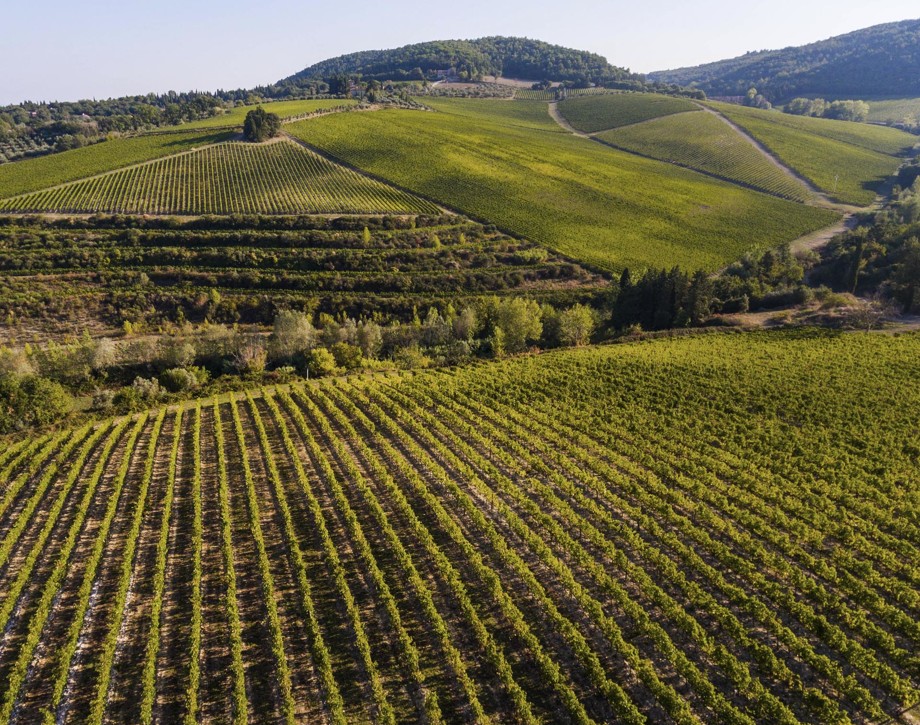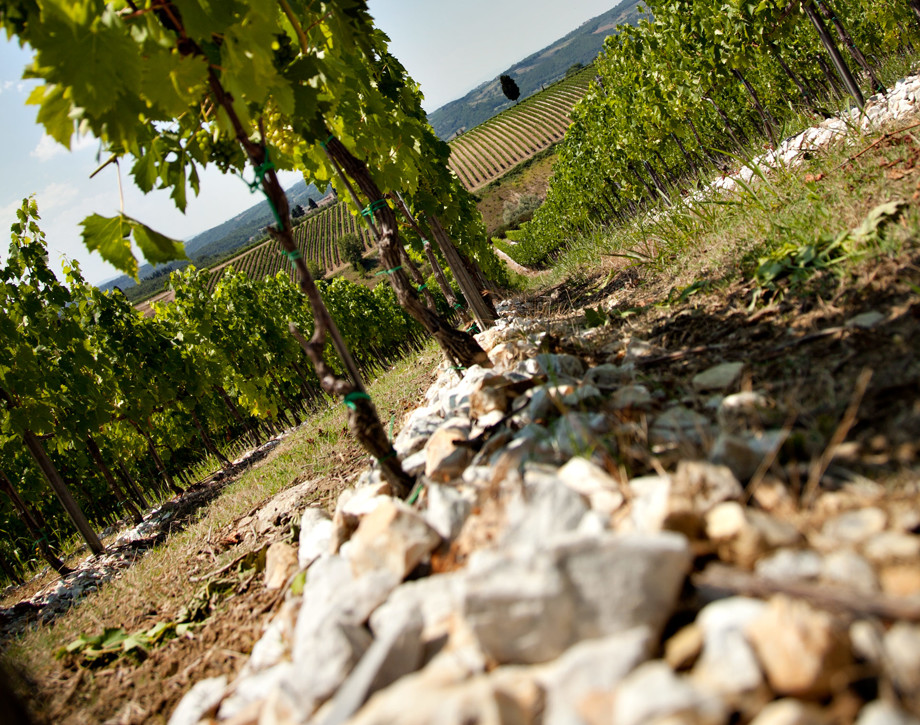Solaia

Climate
The season was characterized by an autumn and a winter which were not particularly cold and with little rain, conditions which favoured a slightly early bud break compared to the preceding vintages. Spring, and the first vegetation, saw the appearance of extremely adverse meteorological conditions, with abundant and continuous rainfall until the end of May which caused a slowing of plant growth, a slowing which, nonetheless, did not have harmful effects on vine health. June and July, instead, were warm and dry, while in August there was scattered rainfall which helped the vines to sustain regular growth of both the vegetation and the grapes. The months of September and October were very favorable for harvest operations, thanks as well to temperature swings from daytime heat to nighttime coolness, optimal conditions for grape quality. Sangiovese was picked during the last ten days of September, while Cabernet continued to be harvested until the middle of October. From the very beginning of the harvest the musts showed very interesting colors and aromas, which indicated that the vintage was of very high level indeed.
Vinification
The favorable conditions during the harvest period permitted calibrated picking operations in the Solaia vineyard, evaluations based on a judgment of the state of ripeness of the grapes and the differences of exposure and vigor of the various vineyard parcels. In the light of these calculations, the grapes of each parcel were picked separately and by hand into small packing cases and fermented in conical sixty hectolitre oak fermenters. The grapes, once in the cellar, were destemmed and the grapes hand sorted with the objective of moving only the finest berries into the tanks. During the fermentation phase much care and attention was given to the extraction, using only the softest punching down of the cap of skins and rack and return (delestage) techniques in order to fully respect the varietal aromas and the elevated color content of the berries. The special conical forms of the fermenters aided the extraction of sweet and elegant tannins in all three different grape varieties, Sangiovese, Cabernet Sauvignon, and Cabernet Franc. Fermentation temperatures were kept to an average of 81° Fahrenheit (27° centigrade) and never allowed to rise above 88° Fahrenheit (31° centigrade) in order to maintain the maximum aromatic character and impact of the of the fruit, well present in the musts. The musts immediately showed a very important potential in terms of color, structure, and varietal character, and when the wine was run off its skins, after a period of skin contact which lasted from three to four weeks, it went into oak barrels, not new, with the intention of putting it through the malolactic fermentation before the end of the year. During the aging of the wine, in new French oak barrels and for a period of eighteen months, the various lots of wine were kept separate. Regular tasting from the barrels allowed a constant evaluation of quality to maximize the aging phase of the winemaking process, one whose objective was to fully bring out the structure, elegance, and sweetness of the tannins. The wine was finally blended and bottled, then aged for a year in bottle before commercial release .
Historical Data
Solaia is a 50 acre (20 hectare) vineyard with a southwestern exposure located at an altitude between 1150 and 1325 feet (350-400 meters) above sea level and with a stony soil of “alberese” (hard limestone) and “galestro” (flaky calcareous clay) rock. The vineyard is located at the Tignanello estate. The Antinori family produced this wine for the first time in the year 1978, and the initial blend was 80% Cabernet Sauvignon, and 20% Cabernet Franc, a formula repeated in 1979 as well. In the following years, 20% of Sangiovese was introduced and certain adjustments were also made in the rapport between Cabernet Sauvignon and Cabernet Franc until the current blend was settled upon. Solaia is produced only in exceptional vintage, and was not produced in 1980, 1981, 1983, 1984, and 1992.
Tasting Notes
The wine shows an elevated color intensity, a sign which, from the very beginning, indicates its importance. The nose is ample and complex, full of fruity and varietal aromas and sensations which begin with black cherries and ripe red fruit and finish with liquorice, coffee, and toasted oak. On the palate the tannins are supple and balanced. The wine is savory and mineral, but soft as well; its aftertaste recalls sweet notes of cacao, vanilla, and black and red berry fruit which linger and last.
Awards
I Vini Di Veronelli 2012 Super Tre Stelle Italy A.I.S. "Duemilavini 2012" Guide 5 Grappoli Italy Annuario Luca Maroni 92/100 Italy Wine Spectator 92/100 USA Wine Enthusiast 97/100 USA Wine Advocate 93/100 USA Antonio Galloni 92/100 USA James Suckling 96/100 USA D'Agata & Comparini 92/100 USA Falstaff 92/100 Austria

The Wine
The sunniest part of the Tignanello's hillside is home to the Solaia vineyard. The very best grapes from the very best vineyard. All the rest is passion, the utmost care and research. These are the secrets of Solaia together with the finest Cabernet Sauvignon, Cabernet Franc and Sangiovese grapes from its namesake vineyard.

Climate
The season was characterized by an autumn and a winter which were not particularly cold and with little rain, conditions which favoured a slightly early bud break compared to the preceding vintages. Spring, and the first vegetation, saw the appearance of extremely adverse meteorological conditions, with abundant and continuous rainfall until the end of May which caused a slowing of plant growth, a slowing which, nonetheless, did not have harmful effects on vine health. June and July, instead, were warm and dry, while in August there was scattered rainfall which helped the vines to sustain regular growth of both the vegetation and the grapes. The months of September and October were very favorable for harvest operations, thanks as well to temperature swings from daytime heat to nighttime coolness, optimal conditions for grape quality. Sangiovese was picked during the last ten days of September, while Cabernet continued to be harvested until the middle of October. From the very beginning of the harvest the musts showed very interesting colors and aromas, which indicated that the vintage was of very high level indeed.
Vinification
The favorable conditions during the harvest period permitted calibrated picking operations in the Solaia vineyard, evaluations based on a judgment of the state of ripeness of the grapes and the differences of exposure and vigor of the various vineyard parcels. In the light of these calculations, the grapes of each parcel were picked separately and by hand into small packing cases and fermented in conical sixty hectolitre oak fermenters. The grapes, once in the cellar, were destemmed and the grapes hand sorted with the objective of moving only the finest berries into the tanks. During the fermentation phase much care and attention was given to the extraction, using only the softest punching down of the cap of skins and rack and return (delestage) techniques in order to fully respect the varietal aromas and the elevated color content of the berries. The special conical forms of the fermenters aided the extraction of sweet and elegant tannins in all three different grape varieties, Sangiovese, Cabernet Sauvignon, and Cabernet Franc. Fermentation temperatures were kept to an average of 81° Fahrenheit (27° centigrade) and never allowed to rise above 88° Fahrenheit (31° centigrade) in order to maintain the maximum aromatic character and impact of the of the fruit, well present in the musts. The musts immediately showed a very important potential in terms of color, structure, and varietal character, and when the wine was run off its skins, after a period of skin contact which lasted from three to four weeks, it went into oak barrels, not new, with the intention of putting it through the malolactic fermentation before the end of the year. During the aging of the wine, in new French oak barrels and for a period of eighteen months, the various lots of wine were kept separate. Regular tasting from the barrels allowed a constant evaluation of quality to maximize the aging phase of the winemaking process, one whose objective was to fully bring out the structure, elegance, and sweetness of the tannins. The wine was finally blended and bottled, then aged for a year in bottle before commercial release .
Historical Data
Solaia is a 50 acre (20 hectare) vineyard with a southwestern exposure located at an altitude between 1150 and 1325 feet (350-400 meters) above sea level and with a stony soil of “alberese” (hard limestone) and “galestro” (flaky calcareous clay) rock. The vineyard is located at the Tignanello estate. The Antinori family produced this wine for the first time in the year 1978, and the initial blend was 80% Cabernet Sauvignon, and 20% Cabernet Franc, a formula repeated in 1979 as well. In the following years, 20% of Sangiovese was introduced and certain adjustments were also made in the rapport between Cabernet Sauvignon and Cabernet Franc until the current blend was settled upon. Solaia is produced only in exceptional vintage, and was not produced in 1980, 1981, 1983, 1984, and 1992.
Tasting Notes
The wine shows an elevated color intensity, a sign which, from the very beginning, indicates its importance. The nose is ample and complex, full of fruity and varietal aromas and sensations which begin with black cherries and ripe red fruit and finish with liquorice, coffee, and toasted oak. On the palate the tannins are supple and balanced. The wine is savory and mineral, but soft as well; its aftertaste recalls sweet notes of cacao, vanilla, and black and red berry fruit which linger and last.
Awards
I Vini Di Veronelli 2012 Super Tre Stelle Italy A.I.S. "Duemilavini 2012" Guide 5 Grappoli Italy Annuario Luca Maroni 92/100 Italy Wine Spectator 92/100 USA Wine Enthusiast 97/100 USA Wine Advocate 93/100 USA Antonio Galloni 92/100 USA James Suckling 96/100 USA D'Agata & Comparini 92/100 USA Falstaff 92/100 Austria

Tenuta Tignanello
The Tenuta Tignanello estate is in the heart of Chianti Classico, in the gently rolling hillsides between the Greve and Pesa river valleys. It extends over an area of 319 hectares (788 acres), of which 130 (321 acres) are dedicated to vines. Two of the estate’s prized vineyards are on the same hillside, Tignanello and Solaia, on soils that originated from marine marlstone from the Pliocene period rich in limestone and schist. The vines enjoy hot temperatures during the day and cooler evenings throughout the growing season. The estate’s two signature wines, Solaia and Tignanello, are produced from these vineyards and have been defined by the international press as “among the most influential wines in the history of Italian viticulture”. According to Marchesi Antinori, Solaia and Tignanello are an ongoing challenge and a never-ending passion. The Tignanello estate has vineyards of indigenous Sangiovese grapes as well as some other untraditional varieties such as Cabernet Franc.

Soil
Soils originating in the Pliocene period, rich in marine fossils with veins of clay. Rich presence of calcareous rocks and marl.
















